Schneider Shorts of 20 October 2023 – Alzheimer’s researcher slapped with fraud findings, a book-filling papermill couple in Sweden, with retractions and editorial ethics fails, and finally, a London university approves of Ayurvedic ethics dumping but disapproves of PubPeer.
Table of Discontent
Science Elites
- Embarrassing beyond words – CUNY finds Cassava researcher Hoau-Yan Wang to be an utter fraud
- This does not amount to a completed and substantiated complaint – QMUL rejects two misconduct notifications
Scholarly Publishing
- A simple honest error – FASEB J announces a fix to Ken Suzuki’s fake paper
- The Editors are satisfied – with Alba Minelli’s forged figures
- Our investigation was inconclusive – CSHL Press announces “no further action” on Alan Storey’s fabrication
- Concussive head injury – Elsevier books consist entirely of Sharma couple’s papermilling
Retraction Watchdogging
- The Editor-in-Chief has lost confidence – Retraction for Cardiff’s Wen Jiang
- Authors have not responded – Frontiers apparently reads For Better Science
- Explanation does not resolve the concerns – Retraction for papermiller Abhijit Dey
- Unathorized third party – Who is Giorgos Jimenez?
Science Elites
Embarrassing beyond words
Another setback for Cassava Sciences, the utterly fraudulent US biotech, and their phony Alzheimer’s cure.
Facts and Fiction of Cassava Sciences
Attack is the best form of defence. Especially when your commercial clinical research is tainted by preclinical Photoshop fraud.
Science reports:
“A much-anticipated investigation by the City University of New York has accused neuroscientist Hoau-Yan Wang, a CUNY faculty member and longtime Cassava collaborator, of scientific misconduct involving 20 research papers. Many provided key support for simufilam’s jump from the lab into ongoing clinical trials.
The investigative committee found numerous signs that images were improperly manipulated, for example in a 2012 paper in The Journal of Neuroscience that suggested simufilam can blunt the pathological effects of beta amyloid, a protein widely thought to drive Alzheimer’s disease. It also concluded that Lindsay Burns, Cassava’s senior vice president for neuroscience and a co-author on several of the papers, bears primary or partial responsibility for some of the possible misconduct or scientific errors.”
This is the mentioned paper, with some of its issues:
Hoau-Yan Wang, Kalindi Bakshi , Maya Frankfurt , Andres Stucky, Marissa Goberdhan , Sanket M Shah, Lindsay H Burns Reducing amyloid-related Alzheimer’s disease pathogenesis by a small molecule targeting filamin A Journal of Neuroscience (2012) doi: 10.1523/jneurosci.0354-12.2012


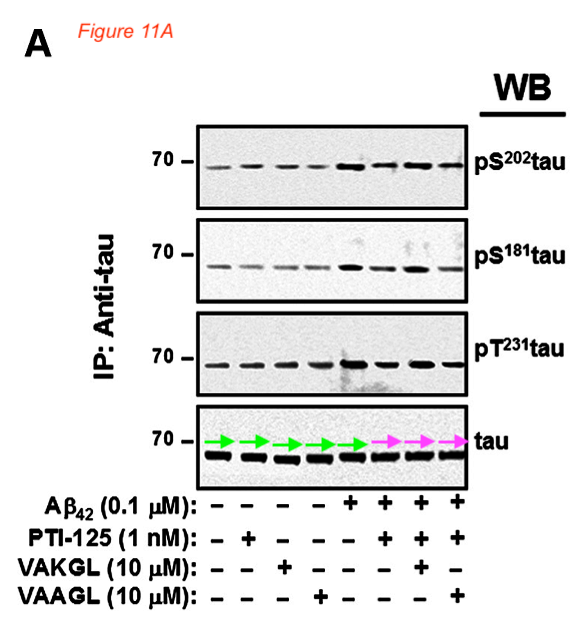
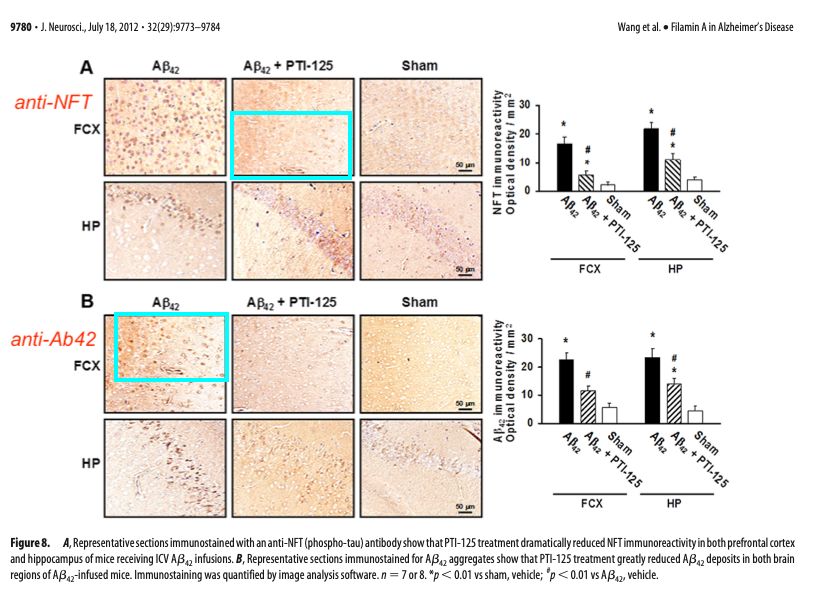
In November 2021, Cassava quoted Journal of Neuroscience in a press release:
“In response to allegations of data manipulation in JNeurosci 2012;32:9773-9784 the Journal requested raw data, including images of original, uncropped Western blots. The Journal determined that there was one duplicated panel in Figure 8 and a Corrigendum was requested and will be printed. No evidence of data manipulation was found for Western blot data.”
In December 2021, the paper was fixed with an Erratum because the authors provided FAKE “raw data”:

Yes, this is the most prestigious society-owned journal in the field of neuroscience. Yes, they looked already back then like a complete wankers. And now they will have to retract both the paper and their own words.
“The CUNY investigators recommended that journals retract the Wang papers they had probed if he can’t provide original data. Multiple journals have already done so, after Schrag notified them of his findings. The investigators noted that PLOS ONE, which retracted five of Wang’s papers, “discovered evidence of research misconduct in his response to the concerns raised.” Other journals, including The Journal of Neuroscience, posted corrections or expressions of concern on Wang papers, with some editors saying they were waiting for CUNY’s investigation before taking further steps.”
Cassava fraud and Alzheimer’s capitalism
“even Theranos didn’t submit fake data to FDA”
Hope dies last I guess. Maybe J Neuroscience hopes for Cassava’s lawyers to squash the retraction requests?
“The committee could not prove its suspicions, however, because Wang did not produce the original raw data. Instead, the panel says its finding of wrongdoing was based on “long-standing and egregious misconduct in data management and record keeping by Dr. Wang.”
The 50-page report obtained by Science says the scientist failed to turn over to the panel “even a single datum or notebook in response to any allegation” and cites “Wang’s inability or unwillingness to provide primary research materials to this investigation” as a “deep source of frustration.””
But Wang did provide raw data to journals! It was fake, but the journals like J Clin Investigation engaged Dror Kolodkin-Gal‘s Proofig to prove it was not fake. Read about this in earlier Friday Shorts.
Proofig – the Kolodkin-Gal family business
“Don’t let online controversies and aggressive blogs easily ruin everything you’ve worked for to build your reputation […] Whether the image issue is innocent or intentional, the outcome is still the same. Bloggers will attack that publication with image issues, which will damage your reputation and may even lead to a costly investigation. We are…
Most likely it was one of the investigators who leaked the report to Science. The report is devastating:
“CUNY biochemist Kevin Gardner, who helped prepare a preliminary assessment of Wang’s work but was not involved in the final review, calls what the panel found “embarrassing beyond words.” Wang’s record of research is “abhorrent,” he says. That this work has supported clinical trials, Gardner adds, “makes it doubly sickening.”
Unlike academic journal editors, the investigators didn’t fall for whatever Wang declared as “raw data”:
“To check for doctoring of those data, [CUNY investigator CUNY Orie] Shafer and his colleagues sought raw-data images to compare against published versions. Wang provided none of those, the report said, adding: “It appears likely that no primary data and no research notebooks pertaining to the 31 allegations exist.” The panel also found that Wang “starkly siloed” Western blot preparation in his lab, apparently preparing nearly all such images himself—a highly unusual practice for a lab’s principal investigator.
Among his defenses, Wang told the investigators that “at least one hard drive” containing key data was destroyed by CCNY officials when they sequestered his materials for review. Wang also accused the committee of bias against him, “failing to follow the CUNY guidelines for this investigation, and of lacking a basic understanding of Western blot analysis.””
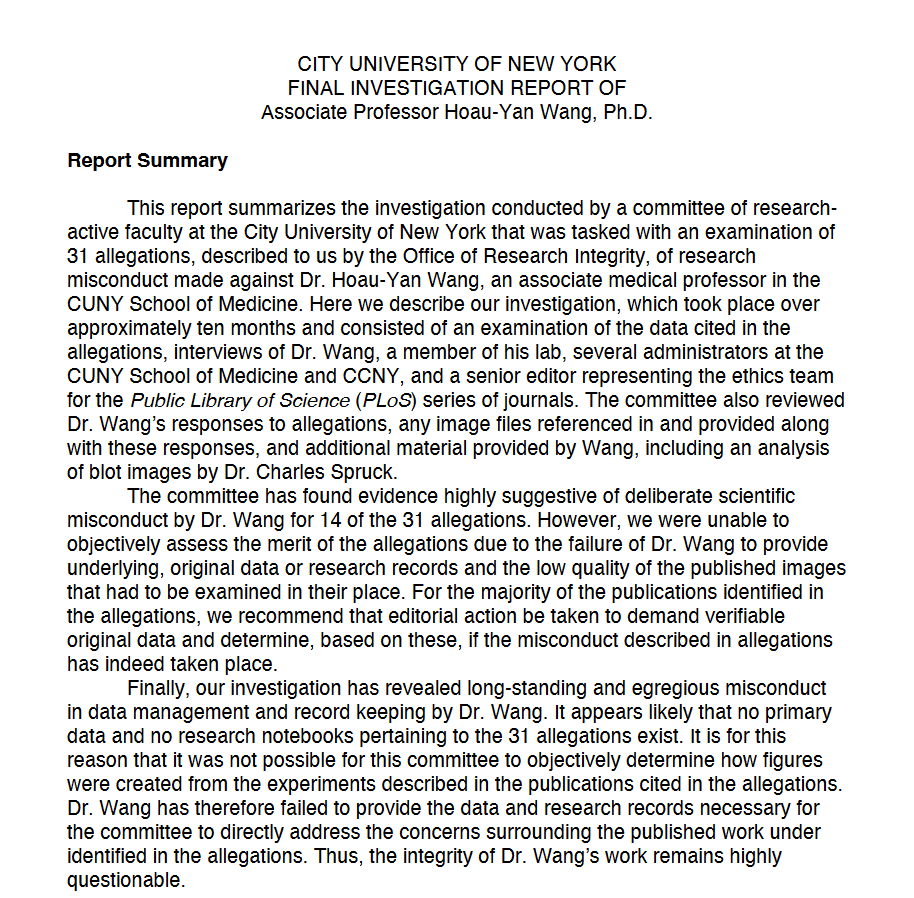
Why did it take 2 years to establish this obvious fraud and find Wang guilty? My guess: CUNY was observing how the Cassava stock developed. At some point, they had to accept the inevitable.
Cassava continues acting like a bunch of stupid lying morons. They issued on 13 October 2023 a press release where they insist:
“CUNY’s report makes no findings of data manipulation. Rather, the “egregious misconduct” cited in the report relates exclusively to internal record-keeping failures at CUNY. […] CUNY
has not responded to an inquiry Cassava Sciences made yesterday regarding the authenticity of the leaked report.”
First, the report doesn’t say what it says, and second, it is fake!
This does not amount to a completed and substantiated complaint
Sholto David reported two suspected research misconduct cases to the Queen Mary University of London (QMUL). They were assigned the numbers QMRI-08 and QMRI-09, apparently those are among the first 10 Queen Mary Research Integrity (QMRI) cases this English university ever investigated in its over 200 year long history.
Case QMUL-09 was that of QMUL professor of cardiology Ken Suzuki, about whom Sholto wrote previously:
Ken Suzuki: The King of Hearts at QMUL
“The only difficult part might be deciding whether Ken has been intentionally deceptive or wildly incompetent, although the difference in practice doesn’t seem so important.” – Sholto David
QMUL-08 is about this clinical study of a COVID-19 drug:
Damian Balmforth, James A Swales , Laurence Silpa , Alan Dunton , Kay E. Davies , Stephen G. Davies , Archana Kamath , Jayanti Gupta , Sandeep Gupta , M.Abid Masood , Áine McKnight, Doug Rees , Angela J. Russell , Manu Jaggi , Rakesh Uppal Evaluating the efficacy and safety of a novel prophylactic nasal spray in the prevention of SARS-CoV-2 infection: A multi-centre, double blind, placebo-controlled, randomised trial Journal of Clinical Virology (2022) doi: 10.1016/j.jcv.2022.105248
The clinical trial was done in India, using a product developed by the Irish company Raphael Labs Ltd in collaboration with the Indian partner “Dabur: World’s Leading Best Ayurvedic Company in India.”
“The work was supported by Raphael labs LTD. The funder had no role in study design, data collection, data analysis, data interpretation, or writing of the report”
It was officially registered as Type of Study: “Ayurveda”, the product is described as “Ayurvedic nasal drop “pHoxvedic”. The spray’s principal ingredients are “ginger oil, eucalyptus oil, basil oil, clove oil“, and the study informs that it “significantly reduced the infection rate from 34.5% to 13.1%” compared to the placebo spray which had basil oil only. Sholto noticed this:
“the declaration of competing interests says: “The authors declare that they have no known competing financial interests or personal relationships that could have appeared to influence the work reported in this paper.” It is then acknowledged that 11 authors are shareholders of Raphael Labs LTD […] It is also clear from a press release that the authors Áine McKnight, Alan Dunton, Angela Russell, Jim Swales, Kay Davies, Steve Davies, and Rakesh Uppal are part of the Raphael Labs’ scientific leadership team.”
The trial is also otherwise very dodgy, as Sholto explained on PubPeer. A 100% enrolment rate with no exclusions and no drop-outs, everyone completed nicely. A 99.3% compliance with the trial protocol despite self-administration and massively self-reported unpleasant experience with the spray. The primary endpoint was changed from positive PCR test to a positive serum test. In this regard, it’s peculiar that the study made no mention of COVID-19 vaccinations, as if it wasn’t relevant (COVID-19 vaccinated yet uninfected people are sero-positive, but negative in the PCR test). The trial started according to the published study on 16 April 2021, but because the ethics approvals were granted by Indian institutions only on same day or days later, the official “prospective” (sic!) trial registration was postponed till 27 April 2021.
Among the study’s authors is Oxford professor, Dame Commander of the British Empire Kay Davies, and her husband and fellow Oxford professor, Stephen Davies. Neither of them is a virologist or in any way connected to infectuous diseases, but Dame Kay has many relevant talents. Publishing and defending fake science both as lead author and as chief editor for example, plus gaslighting and betraying of whistleblowers.
Dame Kay Davies, Commander of the Photoshop Empire
Oxford professor Dame Kay E Davies, DBE FRS FMedSci, edits the journal Human Molecular Genetics. If you are a scientist who likes Photoshop, but afraid to get caught, give Dame Kay a call!
Bologna cover-up at Oxford University Press
This is the second part of the Bologna whistleblower account. As the university was burying their own misconduct findings, Oxford University Press and their ignoble editor were busy punishing and gaslighting the whistleblower.
The lead authors of the Indian clinical study are based however NOT in India, but in London. First and sole corresponding author Damian Balmforth and last author Rakesh Uppal are both at St Bartholomew’s Hospital (Barts), which is part of QMUL. Uppal also has a second affiliation with the William Harvey Research Institute, also at QMUL. Yes, that fraud factory a Nobelist once set up to destroy biomedical science.
Queen Mary and John Vane’s Cowboys
Welcome to the the William Harvey Research Institute in London. Meet two proteges of its founder, the late Nobelist Sir John Vane: Chris Thiemermann and Mauro Perretti. Then meet their own rotten mentees, especially Salvatore Cuzzocrea and Jesmond Dalli.
And now, the letter Sholto received from QMUL on 12 October 2023 about those two cases.
“Dear Mr David,
Allegations of research misconduct QMRI-08 and QMRI-09
I am writing with regards to two formal complaints you have recently submitted alleging research misconduct. As we received these around the same time, I will deal with both in this letter.
At Queen Mary University of London, we take allegations of research misconduct extremely seriously. Therefore, your complaints were triaged and assessed rigorously in accordance with our policy. As a result of this assessment, we will not be pursuing further investigation. I will explain the reasons for this below.
In your complaint QMRI-08, you suggest there has been possible fabrication. This appears to be based on a view formed about the indications in the data. However, no further substantiation nor analysis is provided. As a result, we do not have sufficient evidence to examine this claim further.
You also raise questions about the ethical approval for the study. This has been granted by Atharva Multispecialty Hospital and Research Centre and Tulsi Hospital in India. It is our understanding that they are the legal sponsors of the study and are thus responsible for the ethical approval.
With regards to the Funder and Competing Interests statements in the journal article, we have raised these with the researcher who is seeking advice from the journal as to whether these statements should be revised for clarity.
Your other complaint, QMRI-09 is comprised of links to comments posted on the PubPeer website. This does not amount to a completed and substantiated complaint that we can review. We do have a procedure for following up on information provided outside the formal complaints process. I am aware that you have already sent us these links by email, and they were dealt with in accordance with this procedure. While we acknowledge communications of this nature, we cannot provide information about outcomes in the interests of confidentiality.
For future reference, I would encourage you to read our webpage, ‘Making an allegation of research misconduct’. This clarifies the information we require from those making allegations of research misconduct and what they, in turn, can expect from us. I hope this is helpful.
Yours sincerely,
Professor Andrew Livingston
Vice Principal, Research and Innovation”
Now, it is amazing how much freedom QMUL grants its clinical researchers, namely total freedom of any responsibility for whatever fraudulent pseudoscience experiments they do on some dark-skinned people in former English colonies. Ethics dumping in action. And of course QMUL struggles to see any COI where English professors make money selling their own phony cures to same dark-skinned people.
And the Suzuki case? QMUL simply refused to investigate it because PubPeer links are not admissible. We all can imagine how they will decide in the case of the William Harvey Research Institute bigwig Christoph Thiemermann. In fact, my emails went unanswered and my colleagues’ notification was not admitted.
Scholarly Publishing
A simple honest error
We remain on Ken Suzuki‘s case and Sholto David’s failed attempts to get anyone to act. Here is the society-owned FASEB Journal, deciding on this freshly published yet fake paper:
Manabu Shiraishi , Ken Suzuki, Atsushi Yamaguchi Effect of mechanical tension on fibroblast transcriptome profile and regulatory mechanisms of myocardial collagen turnover The FASEB Journal (2023) doi: 10.1096/fj.202201899r

The first author, Suzuki’s mentee and current QMUL research associate Manabu Shiraishi replied on PubPeer, regretting “a simple honest error” which “does not affect the conclusions of the paper.” He also to “formally request the FASEB Journal to replace the images in the Supplemental Figure.“
Sholto wondered:
“I’m still concerned that this is the sixth paper on which you are a co-author where I have identified image concerns.”
Indeed, there were more image duplication problems in this same paper, observe the coloured boxes:



“Figure 3F: I think the magnified insets are from the wrong panel.”
Shiraishi promised to investigate everything and said:
“I have contacted the relevant authorities of the University and the University is conducting an investigation in accordance with the regulations.”
As you read above, QMUL is not investigating the Suzuki case because PubPeer links are not allowed. But FASEB Journal investigated, and here is the result, announced by the Editorial & Production Manager MR Carey:
“Dr. David:
Thank you for bringing this to our attention.
We are aware of the cited PubPeer thread, and the authors have requested an erratum. It should be published online within a few business days.“
And there it is, the Erratum published on 13 October 2023:
“The authors report errors in assembling the versions of Figures 2C and 3F and supplemental figures that were provided for publication. The wrong images were inadvertently selected […] These errors do not affect the results and conclusions presented in the article. The authors apologize for any inconvenience these errors may have caused.”
What did you expect, a retraction? Only from FASEB’s cold dead fingers!
The Editors are satisfied
Editors investigated a fake paper by Alba Minelli of University of Perugia in Italy, the result is shameful. Read about her earlier retraction and other fake papers in earlier Friday Shorts.
L. Liguori , E. De Lamirande , A. Minelli, C. Gagnon Various protein kinases regulate human sperm acrosome reaction and the associated phosphorylation of Tyr residues and of the Thr-Glu-Tyr motif Molecular Human Reproduction (2005) doi: 10.1093/molehr/gah154


On 3 March 2023, this Editorial Note was published:
“The Editors were alerted in November 2022 that a reader had expressed concerns regarding elements of Figures 3 and 4 of Molecular Human Reproduction, Volume 11, Issue 3, 1st March 2004, Pages 211–221, https://doi.org/10.1093/molehr/gah154.
The allegations are summarised below.
Figure 3 (upper western blot):
• The band patterns in lanes 1–4 are similar in appearance to those in lanes 5–8.
The Editors investigated, analysing the images carefully and agreeing with the reader that the bands in question seemed to have unusual levels of similarity. They then attempted to contact the authors. Although the Principal Investigator passed away in 2012, a senior author was able to confirm that the original western blots and films, as well as the related analysis, are no longer accessible due to a laboratory move several years ago. However, the author drew the Editors’ attention to a figure presented at a conference (Liguori et al., 2004) that included a blot from a repeated (identical) experiment (Figure 1), thus confirming the validity of the data presented in Figure 3.
Figure 1
Figure from conference abstract (left) and figure from MHR article (right).
Figure 4 (lower Western blots; bottom panels, b):
• The band patterns in the two lanes shown in the panel on the left are similar in appearance to those of the two lanes in the panel shown on the right.
Again, the Editors investigated, analysing the images carefully using densitometric analysis and ultimately concluding that the band patterns exhibit clear differences in their pixel densities.
Even without the original western blots and films related to Figure 3, the Editors are satisfied that the results and overall conclusions of the original work have not changed.”
I suspect it was “a senior author” named Alba Minelli who provided the replacement figure. But Aneurus Inconstans was not impressed by the authoritative editorial expertise. He commented on PubPeer that, among other things:
“it is bizarre that the quantification beneath the blot is identical between the conference figure and the paper figure. Although the blots are similar in signals, they are not identical.“
And as for the other figure:
“regarding Figure 4, those few pixels of difference are caused by a well known phenomenon called “compression artifact”, which occurs when the same figure gets rescaled, which is exactly what happened in this case“
And:
“But the most incredible part of this Editor’s Note is that the editor acknowledged Figure 3 has been manipulated but did not chose neither to retract the article, nor to issue an expression of concern, nor to demand a correction.”
Of course, the reason why this new “figure presented at a conference” is at such low resolution is to obscure that it is also fake.
If you wonder what kind of failed scientists are satisfied with all this fraud: The Editor-in-Chief is Michele Boiani of Max-Planck Institute in Münster, Germany, his deputy is Northwestern University professor Francesca Duncan in USA. When invited to explain his decision, Boiani and the journal remained silent.
Our investigation was inconclusive
The allegedly respectable academic publisher Cold Spring Harbor Labs Press (CSHL Press), which also hosts the preprint platform BioRxiv, made another embarrassing editorial decision. Previously, their editorial policy of deleting all emails by Clare Francis got accidentally leaked, to which the CSHL Press executive director John Inglis reacted with vicious and factually wrong tirades against myself and Clare Francis.
Editors vs the Anonymous
A tale of brave academic editors fighting those bad, naughty, annoying anonymous whistleblower trolls
Well, the only good news is that CSHL Press started to reply to Clare Francis now. The bad news: they reply with crap.
It is about the very same fake paper by Alan Storey, a former professor at Queen Mary University London and University of Oxford, who since 2013 for some reason works as medical writer for changing businesses. Storey has had even more fake stuff in his papers exposed on PubPeer, maybe this is somehow connected to his abrupt and surprising career change.
Sarah Jackson , Catherine Harwood, Miranda Thomas , Lawrence Banks, Alan Storey Role of Bak in UV-induced apoptosis in skin cancer and abrogation by HPV E6 proteins Genes & Development (2000) doi: 10.1101/gad.182100





The case was reported to CSHL press in August 2022, over a year ago. Now, on 18 October 20923, Clare Francis was informed of the editorial decision.
“Dear Claire Francis,
Thank you for your letter regarding the published paper “Role of Bak in UV-induced apoptosis in skin cancer and abrogation by HPV E6 proteins” from Dr. Storey and colleagues. We have investigated the issues raised about this paper in your email and on Pubpeer. Unfortunately, our investigation was inconclusive, and no further action could be taken.
Sincerely,
Genes & Development Editorial Team”
Maybe they do this just to spite us? Get a life, John.
Concussive head injury
Science is published not only through research papers, but also through books. In most cases, the authors self-plagiarise own texts, sometimes they plagiarise outright. Sometimes there is research fraud.
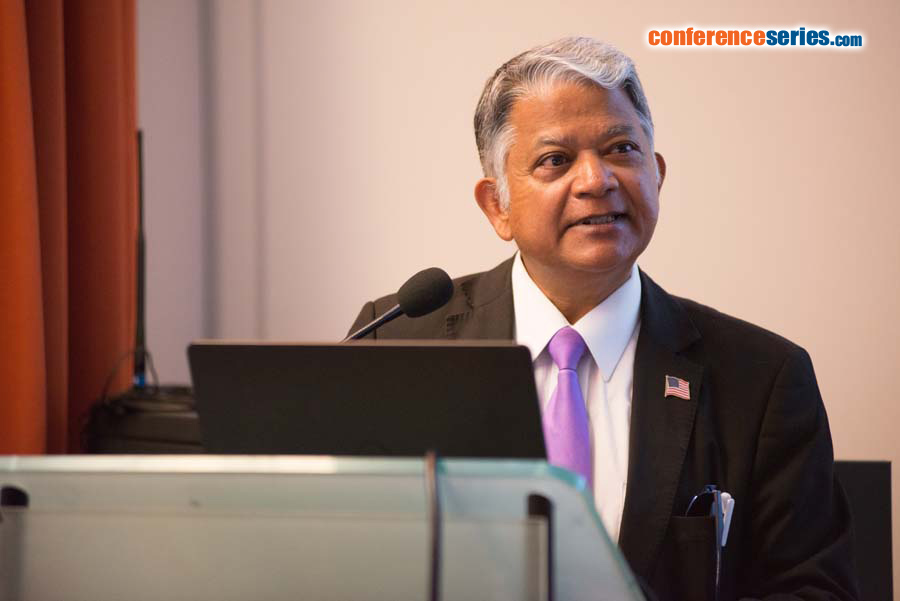
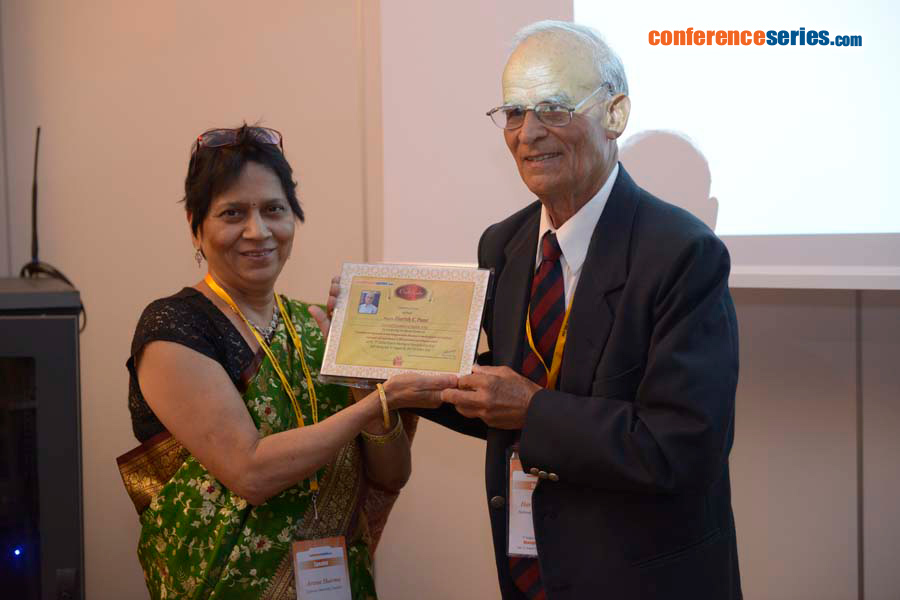
Here, an entire book full of fraud. Two books even! The Indian husband and wife couple Hari Shanker Sharma and Aruna Sharma, both employed by the Uppsala University in Sweden, convinced Elsevier that it would be a good idea to let them run two tomes of Progress in Brain Research all by themselves. So Volume 258, titled “Neuropharmacology of Neuroprotection”, and Volume 266, titled “Brain Protection Strategies and Nanomedicine” (what did you expect?), became a parade of Sharma fraud, every single one of these books’ chapters is authored by the Sharmas, and each is most obviously papermilled fraud. Their “co-authors” hail from russia, Sweden, Italy, Romania, China and Spain, those affiliated in USA have Persian and Arab names.
From Volume 266, Chapter 1:
Aruna Sharma, Dafin F Muresanu , Ranjana Patnaik , Preeti K Menon , Z Ryan Tian , Seaab Sahib , Rudy J Castellani , Ala Nozari , José Vicente Lafuente , Anca D Buzoianu , Stephen D Skaper , Igor Bryukhovetskiy , Igor Manzhulo , Lars Wiklund , Hari Shanker Sharma Histamine H3 and H4 receptors modulate Parkinson’s disease induced brain pathology. Neuroprotective effects of nanowired BF-2649 and clobenpropit with anti-histamine-antibody therapy Progress in brain research (2021) doi: 10.1016/bs.pbr.2021.06.003


Chapter 4:
Hari Shanker Sharma, José Vicente Lafuente , Lianyuan Feng , Dafin F Muresanu , Preeti K Menon , Rudy J Castellani , Ala Nozari , Seaab Sahib , Z Ryan Tian , Anca D Buzoianu , Per-Ove Sjöquist , Ranjana Patnaik , Lars Wiklund , Aruna Sharma Methamphetamine exacerbates pathophysiology of traumatic brain injury at high altitude. Neuroprotective effects of nanodelivery of a potent antioxidant compound H-290/51 Progress in Brain Research (2021) doi: 10.1016/bs.pbr.2021.06.008


Chapter 6:
Hari Shanker Sharma , Dafin F. Muresanu , Seaab Sahib , Z. Ryan Tian , José Vicente Lafuente , Anca D. Buzoianu , Rudy J. Castellani , Ala Nozari , Cong Li , Zhiquiang Zhang , Lars Wiklund , Aruna Sharma Cerebrolysin restores balance between excitatory and inhibitory amino acids in brain following concussive head injury. Superior neuroprotective effects of TiO2 nanowired drug delivery Progress in brain research (2021) doi: 10.1016/bs.pbr.2021.06.016


Chapter 8, its title hilariously insane:
Hari Shanker Sharma , Dafin F Muresanu , Asya Ozkizilcik , Seaab Sahib , Z Ryan Tian , José Vicente Lafuente , Rudy J Castellani , Ala Nozari , Lianyuan Feng , Anca D Buzoianu , Preeti K Menon , Ranjana Patnaik , Lars Wiklund , Aruna Sharma Superior antioxidant and anti-ischemic neuroprotective effects of cerebrolysin in heat stroke following intoxication of engineered metal Ag and Cu nanoparticles: A comparative biochemical and physiological study with other stroke therapies Progress in brain research (2021) doi: 10.1016/bs.pbr.2021.06.014

From Volume 258, Chapter 1, also here do appreciate the utter insanity of the title:
Aruna Sharma, Dafin F Muresanu , Seaab Sahib , Z Ryan Tian , Rudy J Castellani , Ala Nozari , José Vicente Lafuente , Anca D Buzoianu , Igor Bryukhovetskiy , Igor Manzhulo , Ranjana Patnaik , Lars Wiklund , Hari Shanker Sharma Concussive head injury exacerbates neuropathology of sleep deprivation: Superior neuroprotection by co-administration of TiO-nanowired cerebrolysin, alpha-melanocyte-stimulating hormone, and mesenchymal stem cells Progress in Brain Research (2020) doi: 10.1016/bs.pbr.2020.09.003

Chapter 3, the title is again nothing but insane:
Feng Niu , Aruna Sharma , Zhenguo Wang , Lianyuan Feng , Dafin F Muresanu , Seaab Sahib , Z Ryan Tian , José Vicente Lafuente , Anca D Buzoianu , Rudy J Castellani , Ala Nozari , Ranjana Patnaik , Lars Wiklund , Hari Shanker Sharma Co-administration of TiO-nanowired dl-3-n-butylphthalide (dl-NBP) and mesenchymal stem cells enhanced neuroprotection in Parkinson’s disease exacerbated by concussive head injury Progress in Brain Research (2020) doi: 10.1016/bs.pbr.2020.09.011

Chapter 6, something crazy about diabetes:
Dafin F Muresanu , Aruna Sharma, Seaab Sahib, Z Ryan Tian , Lianyuan Feng , Rudy J Castellani , Ala Nozari , José Vicente Lafuente , Anca D Buzoianu , Per-Ove Sjöquist , Ranjana Patnaik , Lars Wiklund , Hari Shanker Sharma Diabetes exacerbates brain pathology following a focal blast brain injury: New role of a multimodal drug cerebrolysin and nanomedicine Progress in Brain Research (2020) doi: 10.1016/bs.pbr.2020.09.004

Chapter 9, and in case you keep wondering what this magic drug Cerebrolysin is – it is something made from mashed pig brains:
Seaab Sahib , Aruna Sharma, Preeti K Menon , Dafin F Muresanu , Rudy J Castellani , Ala Nozari , José Vicente Lafuente , Igor Bryukhovetskiy , Z Ryan Tian , Ranjana Patnaik , Anca D Buzoianu , Lars Wiklund , Hari Shanker Sharma Cerebrolysin enhances spinal cord conduction and reduces blood-spinal cord barrier breakdown, edema formation, immediate early gene expression and cord pathology after injury Progress in Brain Research (2020) doi: 10.1016/bs.pbr.2020.09.012

There are currently over 40 fraudulent Sharma papers flagged by Dysdera arabisenen on PubPeer, way beyond these two books. The Sharmas left India in 1986 and worked in universities in socialist Hungary and Eastern Germany (GDR), until in 1992 they moved to Uppsala, where the husband obtained a medical degree in 1999. The man who befriended and installed the Sharmas in Uppsala seems to be the 80-year-old emeritus professor Lars Wiklund, he is co-author on 20 fake papers by the Sharmas.
For example, look what nano-nonsense this octogenarian young-at-heart spring chicken just published as first author:
Lars Wiklund , Aruna Sharma, Dafin F Muresanu , Zhiqiang Zhang , Cong Li , Z Ryan Tian , Anca D Buzoianu , José Vicente Lafuente , Ala Nozari , Lianyuan Feng , Hari Shanker Sharma TiO-Nanowired Delivery of Chinese Extract of Ginkgo biloba EGb-761 and Bilobalide BN-52021 Enhanced Neuroprotective Effects of Cerebrolysin Following Spinal Cord Injury at Cold Environment Advances in Neurobiology (2023) doi: 10.1007/978-3-031-32997-5_9



Ironic: even Uppsala rector Anders Hagfeldt was caught on papermilled forgeries. With no consequences so far.
Swedish rector Anders Hagfeldt pronounced innocent of papermilling
“The board’s conclusion is therefore that the deviations regarding figure 2b and 2c in article 1 constitute serious deviations from good research practice”
Both Sharmas are employed at the Uppsala University’s Anaesthesiology and Intensive Care group which Wiklund used to be the head of, Hari is listed as “researcher”, Aruna as “secretary”. A final insult: Oscar Simonson, one of the four original Macchiarini whistleblowers, works there also, after he left Karolinska Institutet to escape the fraud networks.
“Notification of Suspected Research Misconduct”, by 4 Macchiarini-whistleblowers
I am publishing a recent letter to the Vice-Chancellor of Karolinska Institutet (KI) Karin Dahlman-Wright, authored by the four KI medical researchers, Matthias Corbascio, Oscar Simonson, Karl-Henrik Grinnemo and Thomas Fux.
Retraction Watchdogging
The Editor-in-Chief has lost confidence
We all forgot about the Cardiff University professor Wen G Jiang, expert on TCM and fake cancer research. Last I wrote about him over 5 years ago, he was whitewashed in full by his British university, because Jiang brought with him big money from a Chinese TCM company.
Cardiff: no misconduct by TCM professor Wen Jiang, report secret
Cardiff university declared their oncology professor and TCM peddler Wen Jiang innocent of any data manipulation. It then issued then a press release accusing me personally of having slandered Jiang with false allegations of misconduct.
Thus emboldened, Jiang continued to publish fraud. Still, Cardiff University could not prevent this retraction:
Yichu Nie , Fenglan Feng , Wei Luo , Andrew J. Sanders , Yidi Zhang , Jiaming Liang , Cheng Chen , Weineng Feng , Weiquan Gu , Weiping Liao , Wei Wang , Jinfeng Chen , Lijian Zhang , Wen G. Jiang , Jin Li Overexpressed transient receptor potential vanilloid 1 (TRPV1) in lung adenocarcinoma harbours a new opportunity for therapeutic targeting Cancer Gene Therapy (2022) doi: 10.1038/s41417-022-00459-0


The retraction notice from 13 October 2023 stated:
“The Editor-in-Chief has retracted this article. After publication irregularities were noted in multiple figures, specifically:
- In Figure 2E there is overlap between the images in the 2% CSE for A549 and HCI-N292.
- Figure 4F the Rac1 band overlaps with the CREB band in figure 5C.
Furthermore, the authors were unable to provide the raw images of the blots published in this study. the The Editor-in-Chief has therefore lost confidence in the results presented in this article.
Yichu Nie does not agree to this retraction. Fenglan Feng, Wei Luo, Andrew J. Sanders, Yidi Zhang, Jiaming Liang, Cheng Chen, Weineng Feng, Weiquan Gu, Weiping Liao, Wei Wang, Jinfeng Chen, Lijian Zhang, Wen G. Jiang and Jin Li have not responded to any correspondence from the editor about this retraction.”
Fried Divine Comedy, featuring anti-cancer cockroach and phallic fungus
This is a follow-up to the previous article, about a misconduct investigation at the Cardiff University in UK into the published works of cancer researcher Wen Jiang, professor of Surgery and Tumour Biology, Fellow of Royal Society of Medicine and chair of Cardiff China Medical Research Collaborative. The following guest post by my regular contributor Smut…
Wait, the really funny part comes now. The Editor-in-Chief who lost confidence is Justin Stebbing‘s dishonest mentee Georgios Giamas. Look at his PubPeer record, and yes, two years ago, Giamas had to retract his own paper with Stebbing (Giamas et al 2009), for fraud.
Oncogene EiC Justin Stebbing, a hypocrite of research integrity?
‘The results have been replicated by ourselves or others, so the image manipulation is irrelevant.’ – Justin Stebbing, double bluffing
Authors have not responded
It seems, Frontiers management still regularly reads For Better Science. They now reacted to an article by Aneurus Inconstans.
“How can one artifically make this happen?”
“This phenomenon is called “fraud with Photoshop”, dear Dr Wei.” – Aneurus Inconstans
This masterpiece about beneficial effects of the flavonoid icariin against insulin resistance has been retracted:
Li M, Zhang Y, Cao Y, Zhang D, Liu L, Guo Y, Wang C. Icariin Ameliorates Palmitate-Induced Insulin Resistance Through Reducing Thioredoxin-Interacting Protein (TXNIP) and Suppressing ER Stress in C2C12 Myotubes Front Pharmacol (2018) doi: 10.3389/fphar.2018.01180






The retraction notice was published on 6 October 2023:
“Following publication, concerns were raised regarding the integrity of the images in the published figures. Image duplication concerns were identified in Figures 1C, 2B, 6C, E, and 7E. The authors failed to provide a satisfactory explanation during the investigation, which was conducted in accordance with Frontiers’ policies. As a result, the data and conclusions of the article have been deemed unreliable and the article has been retracted.
This retraction was approved by the Chief Editors of Frontiers in Pharmacology and the Chief Executive Editor of Frontiers. The authors have not responded to correspondence regarding this retraction.”
Explanation does not resolve the concerns
The Indian papermiller Abhijit Dey (read earlier Friday Shorts) loses a paper. I asked Plos One to retract it, and they now did.
Romaan Nazir , Devendra Kumar Pandey , Babita Pandey , Vijay Kumar , Padmanabh Dwivedi , Aditya Khampariya , Abhijit Dey, Tabarak Malik Optimization of diosgenin extraction from Dioscorea deltoidea tubers using response surface methodology and artificial neural network modelling PLoS ONE (2021) doi: 10.1371/journal.pone.0253617

According to stated authors’ contribution, nobody performed any experiments. Which is actually the truth. They were all made-up.
The Retraction notice from 12 October 2023 went:
“Following the publication of this article [1], concerns were raised regarding the results presented in Fig 2. Specifically,
- In Fig 2A, the following lanes appear similar:
- ○ Lanes 1–4 and lanes 16–19
- ○ Lanes 5, 6, and 20
- ○ Lanes 7 and 21
- ○ Lanes 8–10, lanes 12–14, and lanes 22–24
- ○ Lanes 11 and 25
- Undisclosed conflicts of interest were identified involving the authors, Academic Editor, and reviewers that call into question the integrity and objectivity of the article’s peer review.
The corresponding author explained that the wrong set of photographs were inadvertently used during the preparation of Fig 2A and provided a replacement figure. However, the corresponding author’s explanation does not resolve the concerns raised with the published figure.
In light of these issues, the PLOS ONE Editors retract this article.
TM did not agree with the retraction. RN, DKP, BP, VK, PD, AK, and AD either did not respond directly or could not be reached.”
Sick psychology
Hindawi has retracted almost SEVEN THOUSAND papermilled forgeries by now. Most are inane garbage, but sometimes there are gems making one wonder if anyone, anyone at all ever checked what is being published.
Nana Shao , He Hu Exploring the Path of Enhancing Ideological and Political Education in Universities in the Era of Big Data Journal of Environmental and Public Health (2022) doi: 10.1155/2022/2288321
Yes, it is a study extolling the virtues and importnance of totalitarian indoctrination. And those who don’t agree belong locked up in jails and mental institutions:
“Some college students, who have sick psychology, estranged interpersonal communication, and misbehavior, minimize to some extent the influence of political and ideological education work [10, 11].”
Patriotism and the many secret identities of Luming Zhang
If you thought you already saw the worst research fraud from China, here comes the next level. Anything goes to please the Communist Party and to advance own academic career under the oppressive regime.
Still, it got retracted. The Retraction notice from 27 September 2023 said the usual:
“This article has been retracted by Hindawi following an investigation undertaken by the publisher [1]. This investigation has uncovered evidence of one or more of the following indicators of systematic manipulation of the publication process:
(1)Discrepancies in scope
(2)Discrepancies in the description of the research reported
(3)Discrepancies between the availability of data and the research described
(4)Inappropriate citations
(5)Incoherent, meaningless and/or irrelevant content included in the article
(6)Peer-review manipulation
The presence of these indicators undermines our confidence in the integrity of the article’s content and we cannot, therefore, vouch for its reliability. Please note that this notice is intended solely to alert readers that the content of this article is unreliable. We have not investigated whether authors were aware of or involved in the systematic manipulation of the publication process.”
Unauthorised third party
This retraction by Sage Publishers is a year old, but its notice is informative if you wish to understand how papermills play on editorial racism.
Li Qiao , Yanfeng Xue , Weidong Tang , Giorgos Jimenez Skin cancer diagnosis based on a hybrid AlexNet/extreme learning machine optimized by Fractional-order Red Fox Optimization algorithm Proceedings of the Institution of Mechanical Engineers Part H Journal of Engineering in Medicine (2022) doi: 10.1177/09544119221075941
The retraction notice was published on 13 October 2022:
“Following publication of the article, the Journal became aware that the identity of one of the authors, G Jimenez, cannot be confirmed at their listed institution. The authors were asked for an explanation of the involvement of an unauthorised third party and did not provide a response.
Adhering to the international guidelines established by the Committee on Publication Ethics, the Journal has determined these are grounds for retraction.
The authors did not respond to this retraction notice or could not be reached.”
You see, papermills keep inventing white authors in order to sell their produce to editors who are mistrustful towards authors from the Global South. Of course “Giorgos Jimenez ” is a silly name to make up, but it is still better than using long-dead famous novelists as fictional authors, as OMICS do:
The Pullulating Polyps of OMICS
“Oh Stewardess, I speak Lorem Ipsum” – Smut Clyde
Well, at least the papermillers haven’t yet deployed an “Adolf Schicklgruber”, but I do suggest they try. Here, more professional papermillers invented much more credible identities like the fictional German researchers “Susanne Klenk” and “Ronald Glassen” of Ulm:
The incredible collaborations of Renaissance men and women
Nick Wise and Alexander Magazinov on the authorships-for-sale market on social media. Merely $700 for the 7th position on some paper way outside your expertise!
I thank all my donors for supporting my journalism. You can be one of them!
Make a one-time donation:
I thank all my donors for supporting my journalism. You can be one of them!
Make a monthly donation:
Choose an amount
Or enter a custom amount
Your contribution is appreciated.
Your contribution is appreciated.
DonateDonate monthly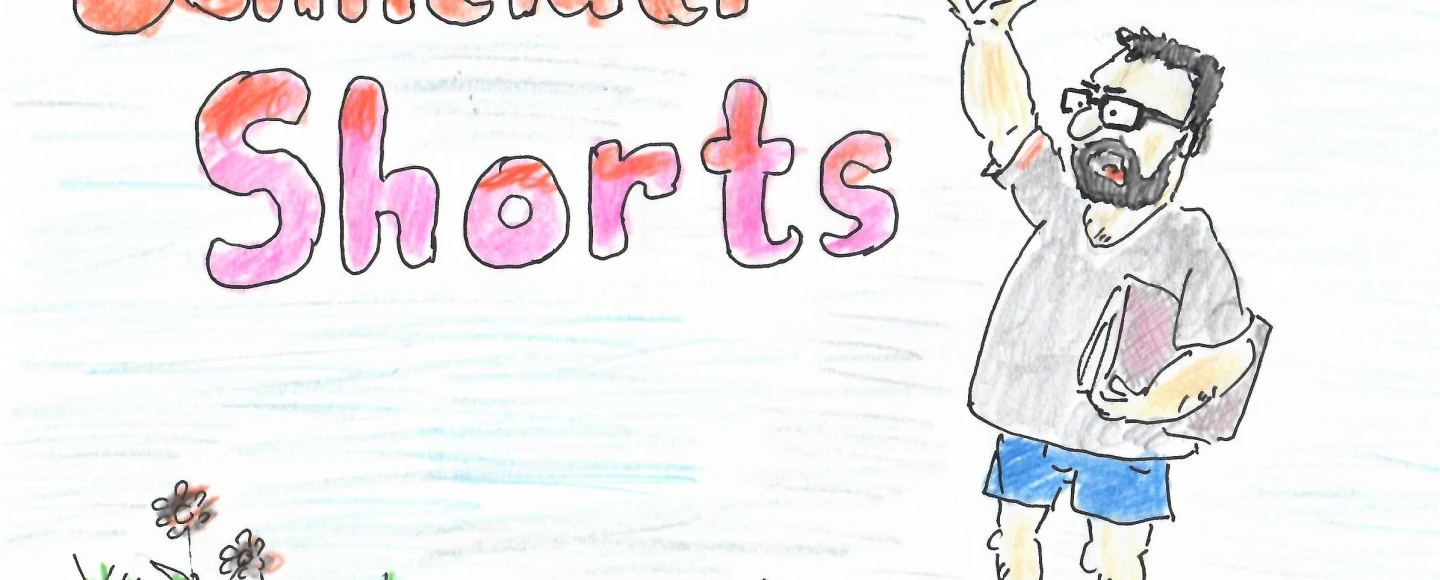


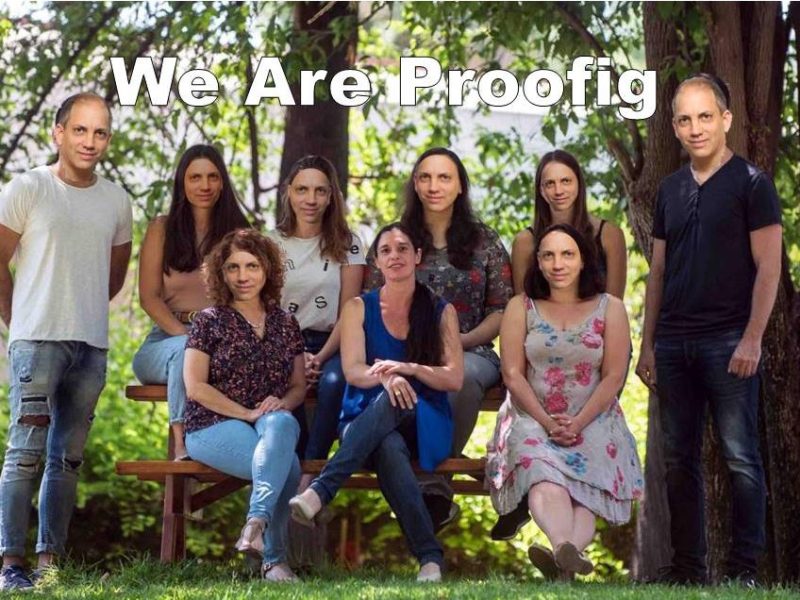
















“This does not amount to a completed and substantiated complaint”
Daniele Bergamaschi, QMUL
https://www.qmul.ac.uk/blizard/all-staff/profiles/daniele-bergamaschi.html
Nothing the matter here:-
https://pubpeer.com/publications/43FB16ED19FAEB3AEB42F460FFCC66
https://pubpeer.com/publications/08D0ABC9985315B36CF7AE06A920A1
https://pubpeer.com/publications/B5F23105E2819B01007B9485C13C2A
https://pubpeer.com/publications/CC7F24A1577FB8CB457AF7D781ACD9
https://pubpeer.com/publications/728B8537D6CEB22560D9345F3F3D1E
https://pubpeer.com/publications/06080F7D25D1A1B598F4DE8DEF5238
https://pubpeer.com/publications/6B8A524A32FDB41878989B261CD1DC
https://pubpeer.com/publications/46CD919799986C18D15745C778C13C
https://pubpeer.com/publications/858FBC108F303612266C62378E71C5
https://pubpeer.com/publications/7476D8C3CD3A61DA534E3610B5B455
LikeLike
PubPeer links are not admissible!
LikeLike
I raised a new complaint about the trial starting before the ethics approvals were in. I did not get a new case number… Now I need to wait 10 business days for a response from QMUL. Wonder how they will wriggle out of this one? Very easily I expect!
LikeLike
Dear Mr David,
we told you the trial was done in India, they have their own rules there. We just get the money.
Get lost before we let the lawyers off the leash.
Yours, QMUL
LikeLike
Any idea why this journal has published this weird letter? The letter has a DOI. https://saez.swisshealthweb.ch/de/article/doi/saez.2023.22127
LikeLike
” Retraction for Cardiff’s Wen Jiang”.
That appears to be Wen Jiang’s 4th retraction.
http://retractiondatabase.org/RetractionSearch.aspx#?auth%3dJiang%252c%2bWen%2bG
LikeLike
Just for your information: A. Dey has 2 more papers in PlosOne that should be retracted.
1° https://journals.plos.org/plosone/article?id=10.1371/journal.pone.0263853 => look at the editor (co-author of A. Dey on several papers, even at the same time this paper was published/went through peer review). Then take a closer look at figure 4 => the ‘replicas’ are identical, just different colors in the graphs, is this possible? (not an expert on this, but seems rather odd).
2° https://journals.plos.org/plosone/article?id=10.1371/journal.pone.0271401
=> check figure 4 as well, similar as the paper above, the replicas are identical! Again, not an expert on this technique, but it seems odd one can obtain identical replicas.
I wonder if these two papers (for sure paper 1 since V. Kumar was an editor) will be retracted soon.
LikeLike
Abhijit Dey just got his second retraction due to image duplications: https://link.springer.com/article/10.1007/s11240-023-02572-w
LikeLike
Abhijit Dey just got his second retraction for image duplications: https://link.springer.com/article/10.1007/s11240-023-02572-w
LikeLike